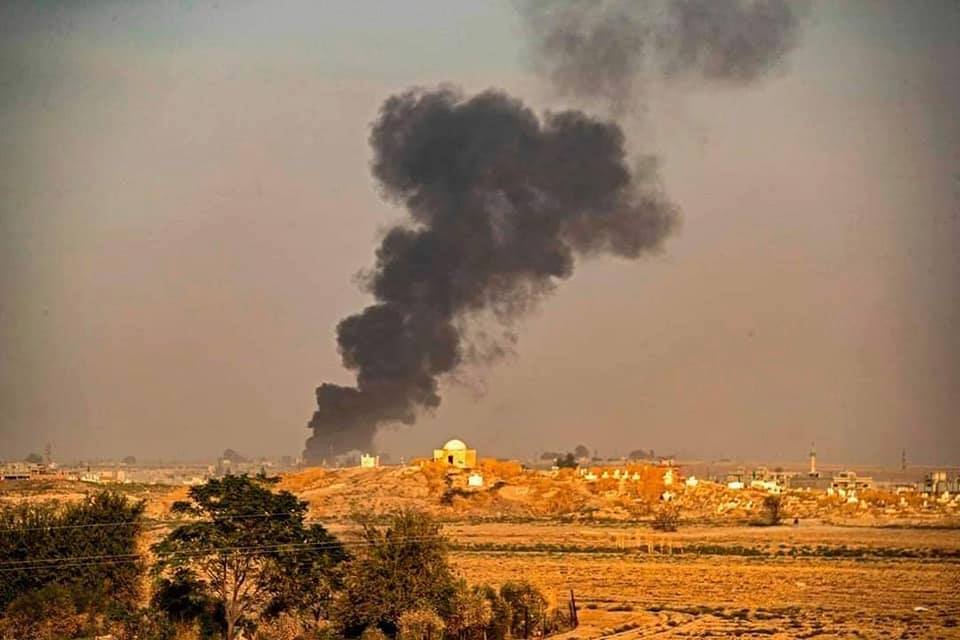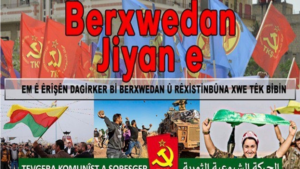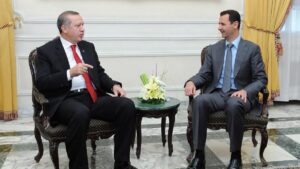The war in Rojava has almost completely disappeared from the scene since the occupation of Girê Spî and Serêkaniyê in 2019, the broad solidarity movement that was still on the streets in their hundreds of thousands during the battle for Kobanê no longer exists. The swarms of journalists and reporters have long since moved on and even the Turkish army’s large-scale drone campaigns are worth no more than a side note or two. The Turkish state is shamelessly exploiting this almost complete lack of attention and continues to work day after day towards its ultimate goal: the complete and final destruction of the autonomous administration. If we here in Europe want to find an appropriate response to these plans, we must first break with some of the widespread narratives that distort the situation in North and East Syria beyond recognition, above all the myth of so-called “low-intensity warfare”.
On the rare occasion that German media reports on Rojava, the Turkish campaign against the self-administration is always described by this cunning term. In other words, a war that is not really a war at all. The boundary between a “low-intensity war” and a “real war” appears to be the deployment of ground troops. For example, the occupation of Afrin was still seen as a real war, whereas the air offensives in 2022 and 2023 were not. The remnants of the solidarity movement here in Europe have also largely adopted this way of thinking; the infamous “Day X”, to which they want to respond with a huge wave of action and large-scale demonstrations, is also equated with the start of a new ground offensive. However, this way of thinking completely misses the reality of Rojava and ignores the strategy that the Turkish state is pursuing with its drone attacks.
Since November 2022 alone, there have been four major waves of attacks in which North and East Syria have been attacked with countless artillery shells, hundreds of heavily armed drones and dozens of fighter jets, in addition to the smaller drone strikes that have taken place continuously on a weekly basis. Anyone who describes these attacks as “attacks on Kurdish militias”, as daily German news program Tagesschau likes to do, for example, has completely lost touch with reality. How could anyone with even a spark of expertise seriously claim that Turkey, while deliberately attacking Kurdish fighters, mudering merely a handful of revolutionaries with hundereds upon hundreds of airstrikes, but purely by chance all the water and electricity plants in the region are razed to the ground. Erdoğan has long since given up trying to hide his intentions and no longer even tries to pretend that his attacks are aimed at the military structures of the YPG. The declared aim is to destroy the infrastructure of the self-administration, to deprive it of the ability to pump water and produce electricity and bread and thus force the population to flee out of sheer necessity and the imminent threat of starvation.
This strategy is particularly threatening when viewed against the backdrop of the embargo and the war on water. The embargo enforced by Turkey and the KDP, its vassal in southern Kurdistan (northern Iraq), makes it extremely difficult to find spare parts for the destroyed factories and machinery. The few parts that find their way to Rojava through smuggling cannot counteract the massive destruction, so an electricity plant that is broken will remain broken long–term and simply cannot be repaired.
The Turkish state also uses dams to prevent sufficient drinking water from reaching Rojava. It is often no longer sufficient for agriculture and, due to the historically low water levels, the water in the Euphrates and Tigris is often muddy and unsuitable for drinking.
Against this backdrop, it is simply absurd to speak of a “low-intensity war” just because there are no Leopard tanks rolling through Dêrik and Kobanê. What is happening here can only be described as a war of annihilation: because the entire basis of the revolution’s livelihood is to be destroyed in this way and the Kurdish people and their friends killed and driven out. Day X is not a mysterious day in the distant future, but today, yesterday and tomorrow!
Our task as progressive forces in Europe is not to wait any longer, but to act immediately with all determination against the Turkish hegemonic fantasies. The time to build a Great Solidarity Movement with Rojava is now!
Long live the resistance of the free peoples of Rojava!
Long live international solidarity!




